What is the Chemical Exposure Risk Assessment?
Chemical Exposure Risk Assessment is a process aimed at preventing or minimizing the exposure of workers to chemicals in businesses, regardless of their size. At ProSCon, we conduct Chemical Exposure Risk Assessment for businesses using the COSHH method, with the goal of creating working conditions that prioritize human health and comply with laws and regulations.
Legal Regulations in Turkey
It is necessary to determine the adverse/harmful effects of chemicals on the health and safety of workers in workplaces and to carry out studies that will reduce or eliminate these effects.
According to the “Occupational Health and Safety Law,“ the employer is obliged to carry out a risk assessment for the workplace or workplaces.
“The “Occupational Health and Safety Risk Assessment Regulation” specifies that during risk assessment studies, the risks identified based on the information and data collected should be analyzed by using one or more of the methods selected based on the characteristics of the company’s activities, the nature of the hazards or risks at the workplace, and the constraints of the workplace, or national or international standards
The employer is obligated to conduct a special risk assessment for working with chemicals in accordance with the provisions of the aforementioned laws and regulations in the “Regulation on Health and Safety Measures for Working with Chemicals.” The following aspects are particularly considered in the risk assessment for working with chemicals:
a) Hazards and risks to health and safety posed by the chemical substance.
b) Material safety data sheets obtained from manufacturers, importers, or suppliers in Turkish.
c) The type, level, and duration of exposure.
d) The quantity of the chemical substance, usage conditions, and frequency of use.
e) Occupational exposure limit values and biological limit values given in the annexes of the Regulation on Health and Safety Measures for Working with Chemicals.
f) The effectiveness of preventive measures taken or to be taken.
g) Results of previous health surveillance.
h) In tasks involving more than one chemical substance, each of these substances and their interactions with each other.
Chemical Exposure Risk Assessment Methods
- Swiss Cheese Model
- Dow CEI Method
- International Chemical Control Tool (ICCT)
- Stoffenmanager Method
- EMKG Tool
- COSHH (Control of Substances Hazardous to Health) Method
COSHH Method
In the UK, the main legal regulation related to the control of chemicals in the workplace is the “Control of Substances Hazardous to Health Regulations.” To assist small and medium-sized enterprises in complying with this regulation, the Health and Safety Executive (HSE) has developed a risk assessment tool called COSHH. COSHH is a qualitative method that assesses and manages chemical exposure risks based on the toxicological hazard classification of chemicals and exposure assessment.
Risk control measures in the COSHH method are based on the principles of the control hierarchy. In addition to engineering controls such as local or general ventilation, administrative controls such as training and safe work procedures also play a significant role in the COSHH method. Risk control measures in the COSHH method are based on the principles of the control hierarchy. In addition to engineering controls such as local or general ventilation, administrative controls such as training and safe work procedures also play a significant role in the COSHH method.
Assessing Health-Based Chemical Exposure Risks with COSHH Method
Based on the information obtained through investigations, research, and surveillance, the assessment of health-based chemical exposure risks with the COSHH method consists of five steps:
At ProSCon...
In our COSHH assessments, before starting work, we conduct detailed research on the activities carried out in the workplace and the chemicals used in the workplace and their hazards.
If there is chemical exposure, the primary focus should be on preventing it at the source through various efforts and research. In cases where exposure cannot be completely prevented, control measures should be implemented to minimize the exposure.
For the COSHH assessment, we follow the steps below:
Chemical Interactions
Within the scope of the Regulation on Health and Safety Measures for Working with Chemicals, chemical interaction matrices are included among the points to be considered during the risk assessment.
Chemical Reactivity
Reactivity refers to the tendency of substances to undergo chemical changes that can result in hazards such as heat generation or the production of toxic gas by-products. Chemical changes can occur spontaneously or through interaction with other substances under specific conditions. Chemical reactivity occurs when suitable conditions are present in chemical processes, storage, or handling.
CRW (Chemical Reactivity Worksheet) Software
There are sources that can determine the theoretical consequences of the reactivity and interactions of chemicals to be used in the assessment of workplace chemicals based on UN/NA identification numbers.
The American Institute of Chemical Engineers (AICHE) has designed the CRW (Chemical Reactivity Worksheet) program, which is freely accessible to everyone, to obtain information about the chemical reactivity of thousands of common hazardous chemicals.
CRW predicts potential hazards resulting from the mixing of chemicals and is designed to assist the chemical industry, emergency response teams, and occupational safety units in preventing hazardous chemical incidents.
The “Mixture Manager” screen allows you to search for chemicals in CRW‘s database, preview information on chemical data sheets, and create a virtual chemical mixture. From this screen, you can access all other features of the program, including the Compatibility Table and Hazard Report for any mixture you create, along with reference information on the reactive groups used in CRW and incompatibilities with specific chemicals.
The Compatibility Table shows the predicted hazards of mixing chemicals in an easy-to-use graphical interface. Reactivity predictions are color-coded, and clicking on cells in the table provides more information about specific estimated reactions. General hazard statements for selected chemicals, predicted gas products, and references to literature documents are displayed below the graph. If your facility manufactures a proprietary chemical not found in the CRW database, you can create your own custom chemical data sheets. Additionally, CRW includes a reactivity prediction worksheet that you can use to virtually “mix” chemicals to learn about potential hazards that may occur in case of an accident, such as a train derailing. For example, if gas production is predicted in a reaction, CRW will list potential products along with literature citations related to the prediction.
To use the program, you start by selecting the “New Mixture” tab for the mixture you will create in the “Mixture Manager” section and give your mixture a name.
Then, you enter at least one of the following information for the chemicals in your mixture: “Chemical Name / CAS No / UN No / Formula” and use the “Search” button to find them in the program. By clicking on the “Add to mixture” button, you can add them to your mixture. You repeat this process for all the chemicals in your mixture. After adding all your chemicals to the mixture, you can view the interactions between the chemicals in your mixture as a report by clicking on the “Mixture Report” tab and see the compatibility of the chemicals with each other as a table by clicking on the “Compatibility Chart” tab.


Example in CRW
CAMEO Chemicals Software
CAMEO Chemicals is a widely used hazardous chemical database for preparing chemical emergency plans and responding to emergencies. CAMEO Chemicals also has a tool for predicting potential hazards when chemicals are mixed.
With CAMEO Chemicals, you can search a comprehensive chemical database to find chemical datasheets containing information on physical properties, health hazards, air and water hazards, firefighting, first aid, and spill response recommendations.
CAMEO Chemicals also provides additional data sheets based on UN/NA identification numbers, which include response information from the Emergency Response Guidebook (ERG) and transportation information from the Hazardous Materials Table (49 CFR 172.101).
In addition, the CAMEO Chemicals software allows you to monitor interactions online.
The CAMEO Chemicals software provides the following features:
- Comprehensive Chemical Database
- Critical Intervention Information
- Chemical Reactivity
- Online, Desktop, and Mobile Application
Formats Each chemical data sheet includes the following information:
- Chemical identifiers (such as CAS numbers)
- Hazards
- Intervention recommendations
- Physical properties
- Regulatory information
- Alternative chemical names
CAMEO Screenshots
Our Services
Our Trainings
We are conducting a comprehensive Chemical Exposure Risk Assessment (using the COSHH Method) in our company to prevent harmful effects on our employees from the chemicals present in our workplace. Additionally, we are preparing a report that includes the interactions between the chemicals to anticipate any adverse situations that may arise in your processes due to the chemicals.











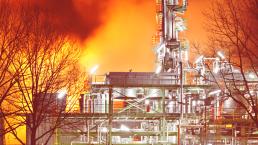



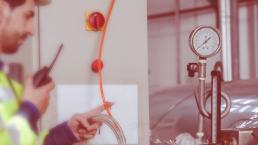



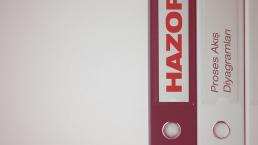


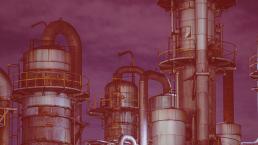

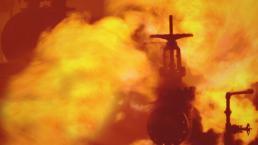

 Takipte Kalın
Takipte Kalın